La Palma – La Isla Bonita! - 18th to 25th September 2025
- Poly Philippou

- Oct 4
- 24 min read
42 of us flew out to La Palma in September, mostly Flamsteed members plus some friends and family (including our youngest ever attendee at a Flamsteed event – 5 month old Ada, starting her path in astronomy super early!), and most of us for a week, though some were lucky enough to be able to go for two weeks. And although it would be an understatement to say that we were a tad unlucky with the weather and observing conditions – a few days of Saharan dust then clouds before the conditions improved – the island is beautiful and has so much to offer, and I hope everyone would agree we had a full and fantastic trip!
The highlight of the holiday was without a doubt our day trip to the Observatory on the Sunday, and thanks to Clive for this report on that below. Also a priority of course was stargazing, and although the first planned stargazing trip did not go ahead due to the poor conditions, the second one did, and we also held an informal stargazing evening at the hotel, and Paul and Gurinder have reported on those two evenings below. La Palma has so much more to offer, and many others in the group have written about their trips and experiences below too. So, although I have written parts of this report and provided some of the photos, I have also collated lots of inputs from many others on the holiday. Huge thanks for their write-ups and photos to (in alphabetical order) Adrian, Amy, Annette, Bobby, Clive, Darshana, Delia, Eddie, George, Georgie, Gurinder, Harpreet, Helen, Janice, Kris, Lanxi, Les, Mal, Paul, Peter, Richard and Ritesh – truly a team effort!
Our day trip to the Roque de los Muchachos Observatory – by Clive
On Sunday 21st September we visited the Roque de los Muchachos Observatory on the rim of the Caldera de Taburiente National Park at a height of 2396 meters above sea level.
Following an early start from the hotel and an exciting coach ride up the winding roads of the Caldera we arrived at the Visitor Centre situated just below the Observatory. Here we met our two Starguides, Carmelo and Rachel, and split into two groups each led by a Starguide for our tour of the telescopes, the William Herschel and the Gran Telescopio Canarias.
The William Herschel Telescope (WHT)
Normally not open to the public, a special tour of the WHT was kindly arranged for us by the Director of The Isaac Newton Group of Telescopes (ING), Dr Ruben Sanchez-Janssen, who recently gave the Flamsteed a talk on The Extremely Large Telescope. Ruben was in the UK at short notice however on the day, and so Javier Mendez in the ING team and the astronomer in charge of the telescope's operation stepped in and conducted our tours instead.
Named after William Herschel, the 4.2m WHT operates in the optical and near infrared. Built in 1987 the WHT is currently the second largest in Europe and is funded by the UK, Netherlands and Spain. Each group was given a tour of the telescope and a description of its current operation and past history by Javier. He mentioned some of its past research achievements - the first evidence of a super massive black hole at the centre of our galaxy (Sgr A), the first optical observation of a gamma-ray burst.
He explained how construction of larger telescopes around the world allowed the telescope to offer time to a number of new "visitor instruments" and become a test-bed for new observational techniques such as the adaptive optics system for the European Southern Observatory's E-ELT project.
Modification of the telescope to a wide-field instrument has also allowed the telescope to devote time to follow up observations in support of the ESA Gaia's survey of the Milky Way galaxy.
Currently being commissioned on the telescope is the WEAVE (William Herschel Telescope Enhanced Area Velocity Explorer). WEAVE is a wide field, high resolution optical spectrograph designed to carry out large-scale spectrographic surveys of the Universe. It uses optical fibres to simultaneously capture the spectra of up to 1000 astronomical objects. Optical fibres are placed robotically into a grid at the prime focus of the telescope, each fibre positioned to capture the light from a single star, galaxy or quasar. Light travels down these fibres and is split into red and blue wavelengths before entering the slits of a dual arm spectrometer, giving the spectrometer a broad spectral range. These spectrographic measurements are used to determine the chemical composition of stars and nebulae in our galaxy, to measure their doppler shifts and hence determine their movement relative to the earth.
Photos inside and outside the William Herschel Telescope, including of our host Javier (photos by, in order, Gurinder, Georgie, Bobby, Clive, Amy and Gurinder again)
The Gran Telescopio Canarias (GTC)
On arrival at the GTC our Starguides Carmelo and Rachel introduced us to GARA. GARA is a robotic assistant, currently guiding visitors, answering their questions and patrolling the facilities. GARA is designed to offer assistance to the astronomers and ultimately take over more of the telescope operation.
Before entering the telescope dome GARA guided us through an immersive experience revealing the wonders of the cosmos.
In the telescope's dome our Starguides explained that the GTC is currently the largest infra-red telescope in the world. First light for the GTC was in 2007. Its 10.4m diameter mirror is comprised of 36 hexagonal mirrors. The telescope uses an adaptive optics system in which each of these mirror's shape and position along with a secondary mirror can be adjusted to maintain a perfect focus, compensating for atmospheric turbulence.
The GTC when fitted with advanced instruments like HiPERCAM is capable of high speed, multi-channel imaging of rapidly changing phenomenon such as black holes, neutron stars, exoplanets, the source of radio bursts and solar system objects.
The telescope's current applications include the study of the structure and evolution of galaxies, the search for habitable exoplanets and the study of star formation.
Photos inside and outside the Gran Telescopio Canarias, including of our guides Carmelo, Rachel and GARA (photos by, in order, Poly, Bobby, Gurinder, Amy, Amy, Eddie, Paul, Bobby and Gurinder)
The Major Atmospheric Gamma Imaging Telescopes (MAGIC)
After the visits to the WHT and GTC, we all drove together to the viewing platform to see the MAGIC telescopes. The first MAGIC telescope started observing in 2004, the second in 2009. There are now six operating or close to operating at the observatory. Each of the 17m MAGIC telescopes is designed to detect particle showers produced by gamma rays entering the earth's atmosphere. The reflecting mirror of each telescope is made up of 270 individual mirror panels which can be individually focused using an active mirror control system employing lasers. The mirror is extremely light and can be moved to point to any position in the sky within 30 seconds.
Gamma rays are the most energetic form of electromagnetic radiation, characterised by their short wavelength and extremely high energy. They come in bursts from sources such as black holes, supernova remnants and X-ray binaries. These very high energy gamma rays are absorbed by the atmosphere, in the process producing a shower of high-energy secondary charged particles. These secondary particles create photons of light through Cherenkov radiation. Cherenkov radiation is created when a charged particle travels through a medium, in this case the atmosphere, faster than the speed of light in that medium. The charge is slowed to the local speed of light by interaction with atoms in the atmosphere, and these atoms lose the energy absorbed by emitting photons of light which are detected by sensitive and extremely fast photodetectors placed at the focus of each telescope.
Fabulous shot showing all 6 telescopes (by Eddie) and fun group shots (organised by Gurinder)
And after the telescopes …. – by Poly
After the telescope visits, we all drove together to the Roque de los Muchachos viewpoint at the very peak of the mountain to admire the amazing 360-degree views there. There were walks to multiple viewpoints, and truly we needed much more time there! Next time 12
Views all around! (photos by Poly)
Then we headed back to the Visitor Centre, with time to explore the exhibits and - of course - to take a group photo! The centre has recently been refurbished and extended, and architecturally the building is lovely. We had our photo taken in the Welcome Room and then explored the three main galleries – “The Canaries, a window to the Universe”, “Exploring the Universe” and “Back to Earth”.
Some of the exhibits at the Visitor Centre (photos by Poly) and a group photo (photo organised by Gurinder)
And finally, on our way back to the hotel, we stopped in the hills above Santa Cruz for a bit of sightseeing at the Real Santuario de Nuestra Senora de las Nieves (Royal Sanctuary of Our Lady of the Snows), a beautiful little church dedicated to the patron saint of the island, situated in a pretty square with lovely views.
The church and the views (photos by Amy)
So many thank yous for this day trip! – by Poly
We would again like to thank Dr Ruben Sanchez-Janssen for arranging our special visit to the WHT and Javier Mendez for his excellent tour of the telescope and for taking the time to patiently answer our numerous questions.
Thanks too to Carmelo and Rachel, our guides from AsterArk, who stepped in at quite short notice to escort us in the GTC when plans changed at the observatory.
Our contact at the Visitor Centre, Roberto, was also so helpful and flexible with arrangements for our visit. He and the staff at the Visitor Centre seemed genuinely excited about having us visit!
And finally thanks to Jonas from Isla Bonita who organised our transport for this trip and of course our very expert and friendly driver Roberto!
Our resident artist – by Poly
Many of you will have noticed Kris sitting to one side, admiring the surrounding and creating beautiful watercolour paintings while we were out and about. Kris has kindly shared this photo of one of her paintings at Roque de Los Muchachos.

One of Kris’ beautiful watercolour paintings (photo by Kris)
Weather Woes Turn to Starry Wins in La Palma – by Gurinder
For much of our stay in La Palma, the weather wasn’t exactly on our side, and the first group stargazing trip on the Friday / Saturday night did not go ahead. However, after our observatory day trip and dinner on the Sunday evening, we were surprised and delighted when the sky suddenly cleared. Without wasting a second, we sent out a quick message to the group that a few of us would be gathering near the pool at the far end of the complex for an impromptu stargazing session.
It turned out to be a fantastic success! Some brought their telescopes, a couple of us had cameras, and many joined in with just their smartphones.
For those new to astrophotography, a couple of us offered a quick tutorial—sharing tips on the best settings for phones and cameras, along with a few basics on editing images afterward. The results were truly impressive. The stunning photos captured by participants exceeded expectations and brought a real sense of excitement and pride.
One of the most rewarding aspects of doing this together was the shared knowledge, our more experienced members guided the rest of us, easily pointing out celestial sights like Andromeda, Cassiopeia, and other constellations. The collective buzz of discovery was infectious.
Group stargazing evening – by Paul
'The eyes of the world are set on La Palma'. So my newly acquired t-shirt proudly proclaimed, together with images of the fantastic telescopes at the observatory. For one night, on Monday 22nd September, the eyes of Flamsteed joined the professionals! A combination of Saharan dust, atmospheric inversion, and unseasonable cloud conspired to restrict us to only the second of our two planned dark sky astronomy sessions, but in the immortal words of Frankie Valli 'oh what a night'! After a hair-raising 90-minute trip up towards the observatory site, coming off the coach (at our viewpoint on the LP-4 road between Mirador de Los Andenes and Mirador de Barranco Hondo de Nogales) into Bortle 1 skies was a literal jaw-dropping moment. When you can see so many stars, the skies look unfamiliar and the Milky Way becomes the 'skymark' to orient yourself. Armed with a smorgasbord of smart scopes, binoculars and smartphones, we prepared to capture our chosen celestial targets, pausing to appreciate the beauty of the sky with unaided eye.
Favourite targets for the smart scopes included the East Veil Nebula, Swan Nebula, North American Nebula, and of course Andromeda, also looking pretty good with bins. Our local starguide Henry, unrestricted by baggage carry-on limitations, was able to supplement the stacking scopes with a direct view 200mm Mak. Saturn, Albireo, and a number of globular clusters were the highlights here. But the absolute 'star' of the show was the Milky Way stretching across the sky in exquisite detail, beautiful to the naked eye and captured impressively with a standard smartphone.
We had arrived at 9:30 pm, and despite the cold, our 2 hours of viewing went by quickly. Warmed up by a ration of Johnny Walker's golden nectar, we reluctantly made our way back to the hotel, tired but exhilarated by our celestial light show.
Images taken on the two stargazing evenings on Sunday and Monday (photo 1 by Harpreet, photo 2 by Les, photos 3-6 by Peter, photo 7 by Mal, photo 8 by Delia, and photos 9-10 by Eddie)
The Fuencaliente salt flats, Tajogaite flows and Cumbrecita viewpoint – by Amy
An intrepid party of 16 set off from the hotel on the Tuesday morning to visit the south of the island. As we meandered down the coast the landscape changed and we began to see more of the banana plantations, small villages and agricultural holdings that form a major part of La Palma’s economy.
We drove through the volcanic landscape across new land formed by the previous lava flows into the sea. Our first stop was Fuencaliente to see the lighthouses and salt flats. Dazzling white and pink salt pools sit on the black lava and ash that descends into the blue sea. Salt has been manually harvested here using evaporation pools since 1967, maintaining an important artisanal tradition. The salt pans supply the island with 60 tonnes of salt per year with the rest available for export. The landscape also attracts migrating waders and in 1994 was declared a Natural Area of Scientific Interest. There are two lighthouses at Fuencaliente, the oldest is hewn from volcanic stone and dates from the turn of the 20th century. It was damaged by an earthquake in 1939 and restored before being superseded by the modern lighthouse in 1985. Painted in red and white bands the new lighthouse makes a striking addition to the Fuencaliente site.
After winding our way out of Fuencaliente, we refuelled with coffee and headed into the area of the most recent lava flows from the eruption in 2021 of an area of the Cumbre Vieja around Cabeza de Vaca. This was the most recent eruption since 1971. The lava flowed for 6km and displaced thousands of people creating a new lava delta. The new volcano was named Tajogaite. We drove over the new road built as the volcano continued to erupt to enable access for communities. We saw the devastation of submerged buildings and renovations where some families and businesses are now returning.
Our final stop was at the Mirador de La Cumbrecita in the national park where despite the cloud we could see the Canarian pine forests and the panoramas down the valley towards the south and up towards the caldera with almost vertical rock walls and deep ravines – the somewhat vertiginous geology of the island was fully on display.
On the way home our guide Jonas reminisced about his time in the UK including all his favourite foods – Sunday roast dinner being one of them!
The many and varied highlights of today’s trip (photos by Poly)
La Palma’s hiking trails and volcanic landscape – by Delia
The island’s rugged and dramatic terrain is shaped by millions of years of volcanic activity, including some from only 4 years ago! Some intrepid Flamsteed hikers clocked up their steps on long walking trails through the Caldera de Taburiente National Park, along the volcanic ridge of the Cumbre, and across the vast solidified lava flows and of the newly formed Tajogaite volcano. This gave us a rare chance to see geological processes frozen in time. We encountered steep ravines, towering volcanic cones, craters, and characteristic rock formations such as dykes, igneous basalt, and pillow boulders (which are the result of hot lava contact with the sea). As we walked we meditated on the raw power of Earth’s geology, and indeed imagined what the surfaces could be like on our rocky neighbours in the solar system.
Getting to the trail heads was a mission in itself involving back roads and hillside passes, and so we would thoroughly recommend the local guided trips. And whilst on the tips, the hiking book "La Palma and El Hierro Walking Guide” by Sunflower is worthwhile, sturdy footwear is a must and we wished we had taken our hiking sticks as the paths can be slippery.
Beautiful and atmospheric photos from Delia and Tom’s hiking (photos by Delia)
Hiking on La Palma – by Paul
La Palma also has plenty to offer during daylight. It's a small island, but the geography lends itself to spectacular and varied scenery. With many keen hikers in the group, most of the classic hikes on the island were enjoyed. On the northeast side of the island, many steep sided ravines ('barancos') descend from the Caldera de Taburiente to the sea, all densely wooded by Laurel Trees forming a lush rainforest. The Caldera itself, formed by the collapse of an enormous volcano (a gigantic sinkhole!), dominates the north of the island, with the observatory perched on the northern edge at over 2400m. Within the Caldera on both west and east edges, there are some fantastic hiking routes. Here the flora is dominated by the extremely hardy Canarian pine, now protected, but originally a source of wood for homes and ships. The North side of the island is different again, with the landscape dominated by dragon trees, banana groves and avocado trees.
Further south, there is a string of volcanos stretching from the middle of the island to the south along the Cumbre Vieja, following the chronology of recent eruptions with the 2001 volcano close to the southern tip. Hikes along the Route of the Volcanoes, or on the new volcano (guided only), present unique and other worldly landscapes of black lava, coloured craters and cones, steam vents together with resilient pines and a floor of multicoloured saplings. I managed a hike everyday but would love to come back for more.
More atmospheric photos from Paul’s hiking (photos by Paul)
Astronomy Museum in Los Cancajos – by Richard
On the last day of the trip, a group of six from our party visited the Ojos al Cielo (Eyes on the Sky) astronomy museum. It was about a ten-minute walk from our hotel down a side road from the main road in Los Cancajos. Entry to the museum, including a guided tour by the owner, Francesca, cost a reasonable group discounted fee of 10.60 euros each. The museum is small but the exhibits were well laid out on plain white walls and on the partitions that led through to each section. As we progressed through the museum our guide led us outwards from our solar system through to the Milky Way, wider universe and covered the basic substances they are composed of. Francesca is an experienced astrophysicist and her enthusiastic presentation throughout the tour was highly enjoyable and informative. Francesca regularly engaged with us by asking us questions and our answers enabled her to tailor her presentation into easy ways for us to understand.
Many of the exhibits were interactive and fun to engage with. For instance, from two of these exhibits I learned that my age of 67 and 101kg weight on Earth corresponded to 278 and 38kgs on Mercury, while on Jupiter they are 5 and 242kgs, respectively. I must seriously consider adopting a healthier diet and lifestyle! Towards the end of the tour we were invited to enter one of two Tardis like enclosed booths. In the one I entered, I experienced visually what it would be like to travel to the planets and stars at the speed of a rocket, light and faster than light speed, respectively. When I came out of the booth the other five of the group had already left the museum, thereby providing further evidence of Einstein’s theory of Special Relativity. My tour ended with a viewing of a short video of spectacular images taken by the Hubble telescope capturing galaxies colliding at different angles of approach and at various stages of completion. Francesca’s 2 hour 20 minute guided tour flew by and it left me wanting to increase my knowledge of astronomy further beyond that which I have gained from documentaries on television.
The entrance to the museum (photo by Poly)
‘Cueva de Poris de la Candelaria’ – Sea Cave – by Harpreet
Porís de la Candelaria is one of La Palma’s most magical and photogenic coastal hideaways with a natural volcanic cave, about 50 meters high, carved into the cliffside. Hidden away is a tiny fishing village dating back to 1588, so we were compelled to visit. Driving to the cave required descending down some steep, narrow roads, not for the faint-hearted but worth the heart stopping journey as the view was breathtaking. It came as a surprise to see that families, including pets, were still living in the cave homes which made us initially feel as though we were intruding but we recognised that they welcomed tourist donations whilst experiencing the delightful scenery.
When looking out from within the cave, its arch framed the Atlantic like a natural window, especially stunning at sunset. We didn’t get a great sunset during our visit, but the views were enchanting and magical nonetheless!
The sea cave homes and cave opening (photos by Harpreet)
Tendal Archaeological Park – by Darshana and Ritesh
This remarkable archaeological park, located near the picturesque town of San Andrés and the famous Charco Azul volcanic pools, offers a glimpse into how the Benahoritas, the indigenous people of La Palma, lived some 2,000 years ago. From the outset, the discoveries at this site gave archaeologists valuable insights into their way of life, which was surprisingly advanced. One of the most intriguing questions was how these people first arrived on the island. As our tour guide, Gail, explained, the answer remains uncertain due to the limited evidence. However, some theories suggest they may have been brought by seafaring Phoenicians or Persians who used the island as a potential stopover during their voyages. The Benahoritas’ sophisticated knowledge of weaving, farming, burial practices such as mummification, and tool-making demonstrates their strong survival skills and cultural development.
The descent towards the caves gave Gail the opportunity to explain how they offered both natural shelter and convenient access to the sea but sadly you can’t enter the caves.
The tour offered a fascinating exploration of the island’s indigenous plants and fauna, highlighting how the Benahoritas skilfully applied them in hunting, cooking, and medicinal practices.
Highlights from the trip (photos by Ritesh and Darshana)
San Antonio Volcano Visitor Center – by Adrian
The San Antonio volcano erupted in 1677, which opened a small crater, which threw out ash whilst lava flowed through a fissure at the base. The information centre was very informative about all the volcanos, going back several thousand years and including the two recent ones: the 1971 Teneguía vent and the 2021 Cumbre Vieja. There is some very graphic video footage of the 2021 event.
The Observatory has very good descriptions of the La Palma volcano history, with explanations in three languages. There are a number of video screens showing the full extent of the 2021 eruption. This by far the most damaging to property, but prompt action by the authorities meant that there was no loss of life.
The walk outside the observatory takes you around the 1677 caldera. It is a good, wide track, leading up to an observation point. From here you can see the south side of island, with lava the Teneguía volcano clearly visible.
At the end of the walk, on the way back, there is a simulation of what the ground feels like during the earthquakes. The ground feels very unstable and shakes under your feet. Strong sturdy shoes recommended.
At night the site changes, and becomes an astronomical observation site. These is a small dome, but I have no idea what’s inside. Beside this is a wide, flat area for telescopes to be placed. With a large car park, this would have been a possible site if the weather was kinder.
Inside and outside the centre (photos by Adrian)
The Silk Museum in El Paso – by Helen
It turns out that La Palma is the only place in Europe that still carries out the entire silk production process by traditional manual methods, from rearing the silkworms to spinning the silk thread and weaving cloth on hand looms. On a visit to the small but delightful Las Hilanderas (Spinners) Silk Museum in El Paso, you can watch a video of the whole process before browsing the exquisite displays on the first floor. The exhibits include silk garments such as an Indian sari, a Japanese kimono, a dyed taffeta tunic from Uzbekistan and a small Persian mat, as well as wonderful locally produced items. Explanations about the exhibits and history of silk production and trading, locally and worldwide, are provided in English as well as Spanish and German. On the ground floor are three looms set up at various stages of preparation, plus the highlight of two ladies engaged in spinning - and happy to demonstrate the processes.
The building housing the museum is itself very attractive and full of character, probably converted from an old house, with lovely wooden interiors. The upper floor was accessible by lift or stairs, and the welcome was friendly. It was well worth the visit and the cost of entry of 3 Euros.
Inside the silk museum (photos by Helen)
The Whale Watching and Dolphin Experience – by Janice
Well, to avoid any overwhelming sense of anticipation by my readers … we did not see any dolphins nor whales. But it was a jolly trip. We were picked up outside the hotel by a most interesting driver who added hugely to the sense of excitement by his general lack of concentration and ability to terrify all his passengers and other road users by his urge to drive UK style i.e. on the left. We were made of stern stuff and once off-loaded at the port of Tazacorte on the east coast we did not have long to wait to pick up the boat. Nice little cruiser and plenty of room for a mixed group of Spanish and UK personalities. We were introduced to the crew and watched bemused at the pilot’s rather unique method of steering the boat i.e. with his feet. We headed north on a sunny afternoon on a gentle sea and visited the caves along the coast with spectacular natural light and beautiful colours and algae reflected onto the cave’s ceilings. We nosed into the little hamlets built into the cliffs, where good neighbourliness is definitely the order of the day, and enjoyed the spectacular flying fish which flitted across the waves for up to 50 meters at a time with blues and silvers in their fins/wings catching the afternoon sun. We watched shearwaters and yellow legged gulls skim across the water and sun themselves on the rocks. We headed back south, binoculars at the ready, with not a cetacean in sight, but had excellent views of the 2021 lava outpouring into the sea. Lots of ‘tubes’ opening out into the water. Finally, with a little bit of a sense of disappointment we headed back to the neat little harbour and headed back up the twisty roads and tunnel to our hotel, but thankfully with a different driver!
A unique method of steering and some lovely sites on the boat trip (photos by Janice)
Story time with Bobby – by Eddie
Saturday arrived and a second planned quiz was postponed due to a vibrant wedding reception taking place within our hotel. Then shortly, on WhatsApp, Bobby suggested he would present Storytime on the observation deck overlooking the rocky seafront. So after supper and darkness fell, we gathered under a somewhat cloudy dark sky, guided by helpful lighting. The location was set out as a mini amphitheatre complete with several rows of benches. The stage could not be more apt!
Bobby welcomed us all with rum and coke, which warmed our cheerful gathering and we all settled down ready to be taken back a long, long time ago and to a far away land, possibly Ethiopia. Thus began Bobby's story about the first Gods of the Sky and Earth which led to Andromeda's tale. We all listened with enchantment, our spirits already fortified with gaiety and gladness induced by the rum. There was the occasional dramatic pause as Bobby turned to reference his literature in hand. There were also a few enquiring questions asked as some of our minds grappled with how Zeus freed his family from his father Cronus's body, and after the briefest debate he explained to everyone's satisfaction.
And then it came to Andromeda's misfortune chained as a human sacrifice to the rocks because Queen Cassiopeia boasted about her beauty upsetting the sea nymphs. So in retribution, Poseidon sent a terrible flood to ravage the coast of King Cepheus’s territory. But along came the gallant Perseus to the rescue who slew the sea dragon and immediately married Andromeda. They must have hit it off well because Andromeda had many children including the ancestor to the Persians. I imagine though a few awkward conversations with her parents for offering her as a sacrifice, but I'm sure they could laugh about it eventually.
Now perhaps, just beyond the rocks and beneath the waves, Poseidon was also impressed with Bobby's story because the skies cleared on cue. Bobby's outstretched arm then revealed the dramatic family portrait in the stars of Andromeda together with Cepheus, Cassiopeia and Perseus!

The audience, warmed by rum and stories of the Gods (photo by Gurinder)
Plan B: Quiz – by Amy
How do occupy a group of astronomers when the Calima blows into the Canary Islands from the Sahara and Friday night’s stargazing trip is cancelled?? You host an impromptu astronomy quiz using the power of Google and AI. The fantastic Adrian Challinor took up the mantle as quiz master resplendent with red head torch ... We covered planets, notable astronomical figures and cosmological theories occasionally surprising ourselves with the level of our knowledge. As with all good quizzes there was too much conferring, too much beer and no overall winner … Almost certainly a quiz should become a staple Flamsteed calendar fixture.
Plan C: Dancing – by Amy
We learned on our La Palma trip that we often needed a backup plan or a plan B. We didn’t expect to need a Plan C but such as it was on Tuesday evening when our planned star gazing trip was cancelled due to cloud. Luckily the hotel came to the rescue with live music – a mixture of Spanish and English pop in the lounge bar. Flamsteed formed a vanguard for dancing (once some reluctance had been overcome) and we stepped the night away to hits including the Macarena. We made some Spanish friends and ended with Bobby leading us all in a conga ... We came, we danced, we conquered.
Great photos of the group (drinking before the dancing I think!) from Eddie and Gurinder
Rum Tasting at Destilerias Ron Aldea – by Georgie
Little did I know, my lovely husband Bobby had been quietly dreaming of a rum tasting—but to be fair, it was on our La Palma must-visit list! The Ron Aldea Distillery was founded in 1936 by the Quevedo family in particular by Don Manuel Quevedo Alemán (1872 -1968). The Quevedo’s family already produced and owned the sugar manufacture in Banaderos, La Palma, but young 16 year old Don Manuel decided to set sail for the Americas to enrich his knowledge in Cuba and Puerto Rico. On his return he worked as a master sugar and rum maker for another rum distillery eventually founding the distillery to produce the Ron Aldea Rum. Note that the method of producing the rum was different that that employed in the Caribbean by using the sugar cane juice rather than the molasses. This gave the rum a richer nuance, aromatics and intensity.
One important fact we learned is that sugar cane originated from Papa New Guinea, however we had the closest guess of India where in fact there are some species originating in India. Onto the factory tour which was a delight hosted by ‘Maria’. The present-day equipment being used for crushing the sugar cane to extract the juice is centuries old and continues to be functional! The juice is collected, boiled, strained and then cooled. After which it moves to the fermentation barrels (yeast is added etc) and on maturation thereafter the extraction of the alcohol happens in a new evaporation copper stills (the older one was decommissioned but still works).
After all this it was time now for the much-anticipated event of “rum tasting” which involved circa 24 bottles of different rum flavours/strengths. Bobby tasted half of these as his palette was more attuned to the molasses made rum until he found one that felt moreish. Hence, we came away with 2 bottles of lovely rum and a complimentary glass added to the purchase.
This was certainly worth a visit and we learnt so much about the rum making process and had fun as well.
Inside the distillery (photos by Georgie and Bobby)
Giant killer crabs of La Palma! – by Poly
I could not resist including these fantastic photos from Lanxi of these cute little critters that are absolutely everywhere on the volcanic black beaches! And thanks to Mal for the title! According to Google reverse search, these are Atlantic red rock crabs, and they are 2 – 5 inches wide (though the ones I saw were at the smaller end of that).
Killer crabs! (photos by Lanxi)
Our hotel and Los Cancajos – by Poly
We stayed at the H10 Taburiente La Playa hotel, in the resort of Los Cancajos on the east coast of the island just south of the capital Santa Cruz. It is a large (the only hotel on the island able to accommodate our large group!) 4-star hotel with rather crazy décor (as you can see in the photos) and a fantastic sea-front location.
The roadside view (not so nice) and the sea-front view (nicer) of the hotel, some of the crazy décor (first three photos by Poly), and Mal in front of the “waterfall” (part of said crazy décor) (photo by Annette)
Los Cancajos is a small, pleasant and functional resort, with all the essentials, and in a lovely setting on the coast and with mountains in the background. There’s a lovely walk along the seafront of Los Cancajos and in front of the hotel, with a number of viewpoints, beaches and cafes. You can walk all the way to Santa Cruz (it takes about an hour), or take a bus or taxi. And from Santa Cruz there are bus connections all over the island. It’s very easy to get around the island by bus, taxi, numerous tours, or by hire car (if you are brave enough to navigate the many winding roads!).
Views along the seafront in Los Cancajos (all photos by Poly)
Santa Cruz de la Palma – by George
Santa Cruz de La Palma, the charming capital of La Palma, is a gem for those who love history, astronomy, and the simple pleasures of life. Our little jovial group, enjoyed a wonderfully pleasant time together, strolling the cobbled streets lined with brightly painted wooden balconies, stopping for outdoor coffee, tapas and Cervezas in the sunshine, and admiring the island’s unique blend of Spanish colonial and Canarian architecture. Many homes and civic buildings reveal ornate internal courtyards filled with greenery and fountains, giving us glimpses of the city’s quieter, hidden beauty behind its lively façades.
Our visit coincided with a wedding in the Plaza de España, a picturesque square framed by Renaissance-style buildings that offered an atmosphere both festive and timeless. Nearby, we explored the full-scale replica of Christopher Columbus’s ship Santa María, which now serves as a maritime museum and a striking reminder of the island’s place in transatlantic trade history. Between the warmth of the people, the cultural richness, and the camaraderie shared among friends, Santa Cruz de La Palma proved to be not just a gateway to the island’s dark skies, but a destination in its own right.
Exploring Santa Cruz de la Palma (photos by George)
Group meal on the last night – by Poly
On what was the last night of the holiday for most of the group, on the Wednesday evening, we all had a meal together at the hotel (we could not find anywhere in the resort that could accommodate such a large group!), and we were joined by Ruben and Javier (our hosts at the William Herschel Telescope) as our guests. After a heartfelt welcome and thanks from Bobby, we settled for lots of food and drink, and even more chat and laughter! The perfect last night together!
Enjoying our last evening together (photos by Delia, Ritesh and Bobby)
And finally – a teaser for a future trip? – by Poly
Perhaps this beautiful photo below taken on our last day in La Palma gives us a teaser for a future trip - To Teide Observatory on Tenerife?

Looking out east towards Tenerife and Mount Teide (photo by Janice)
As you can see, we had a full and varied week! And the greatest pleasure was spending so much time with such a lovely group of like-minded people. Thank you to everyone on the holiday for making it such a memorable week.











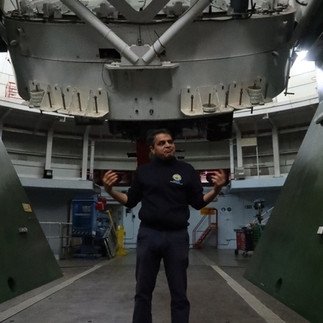









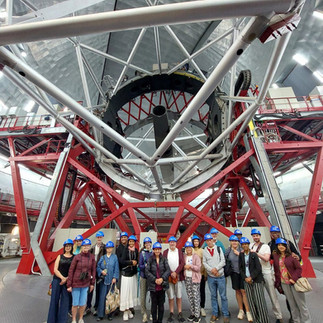


























































































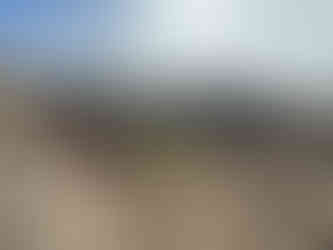



































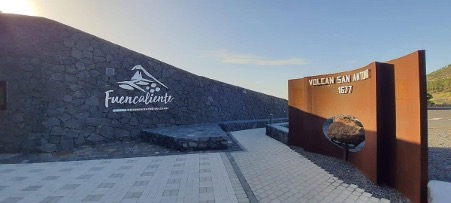































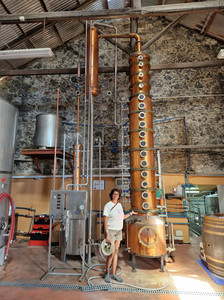



















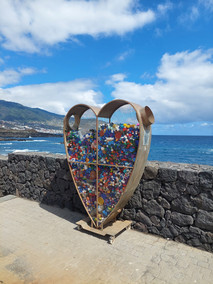
























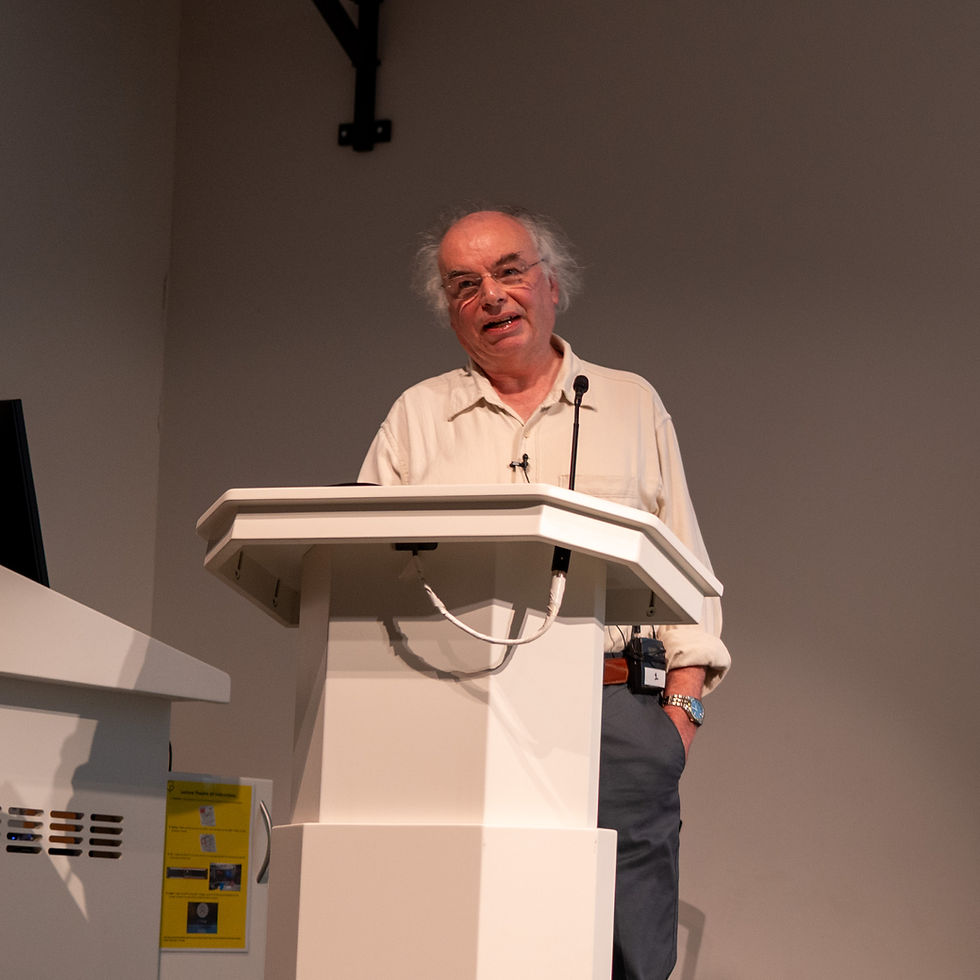
Comments